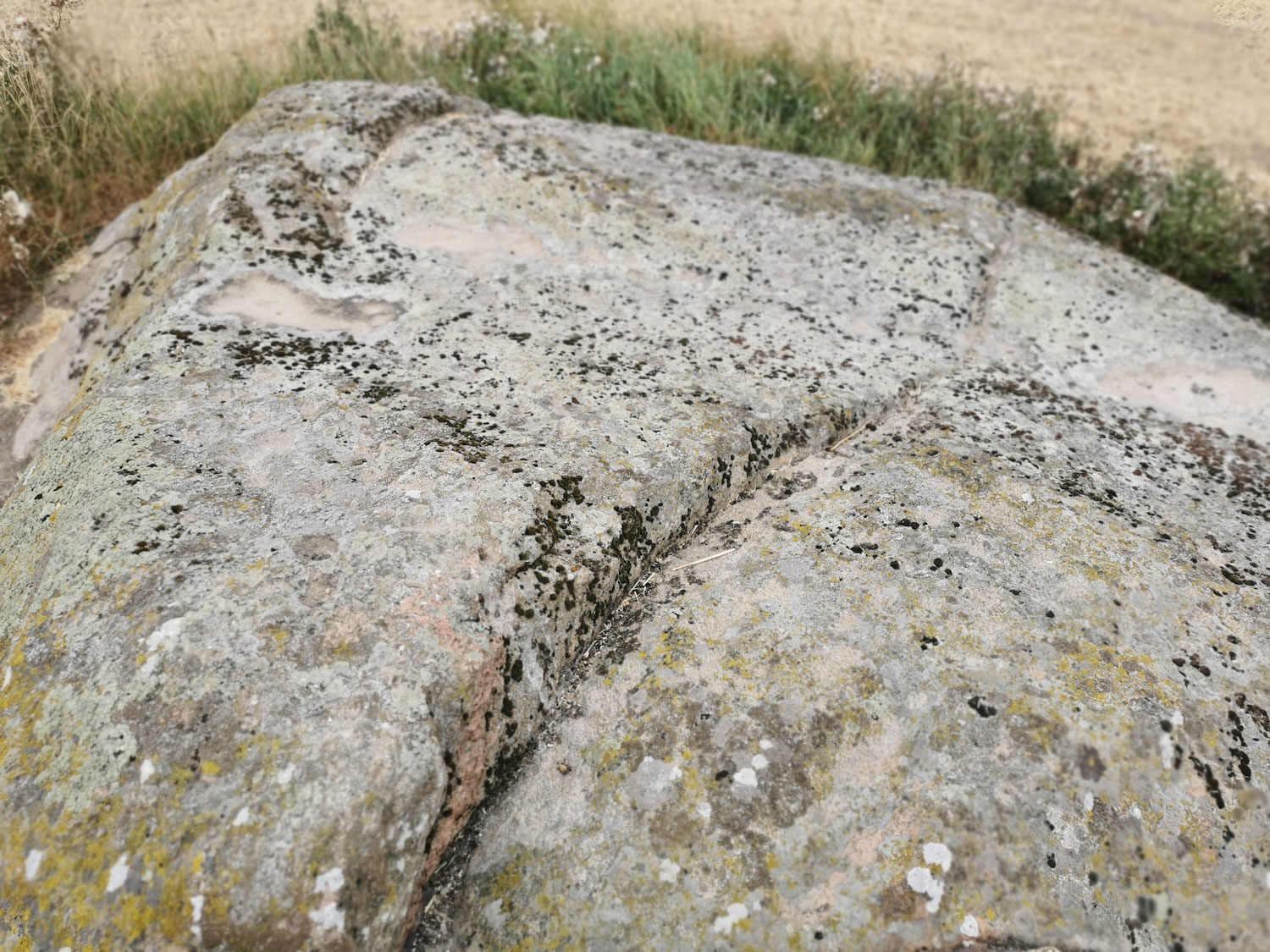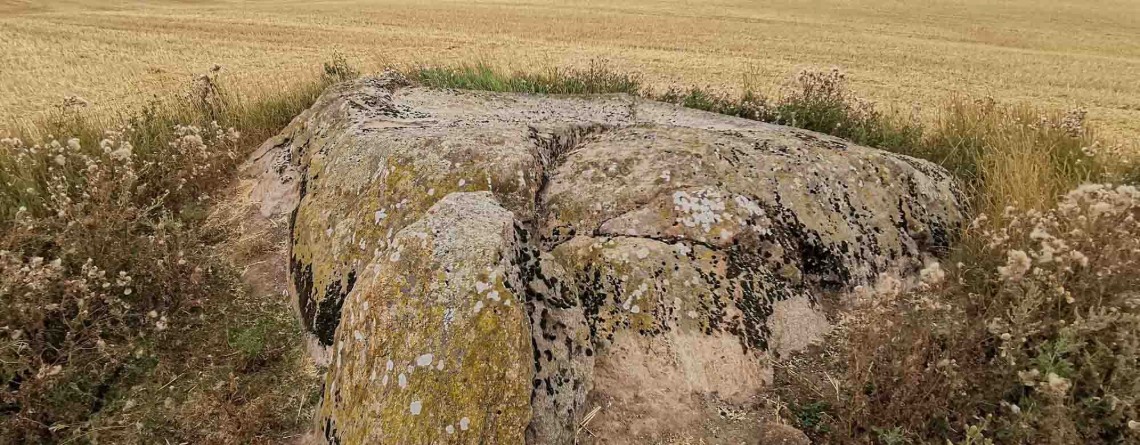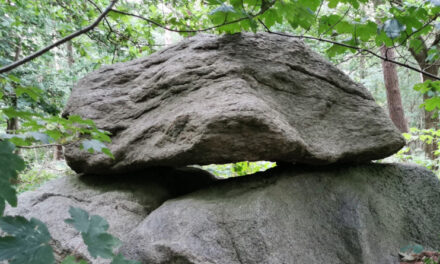Folklore says the Bloodstone was a sacrificial altar where grooves would drain blood away. Read about the mysterious rock, and the past associated with it, here
Parking: There are no real parking options close by, but the road leading up to the field (Vestmarken) is not very heavily trafficated, so it is possible to pull aside and not be too much of a bother to other drivers
Good To Know: If possible, ask the inhabitants of the nearby farm if you may cross their field, especially when there are crops growing
Nearby Attractions: The Snare Hill Dolmen, The Cross At Conradineslyst
The Bloodstone is a 5 x 5,2 x 1,5 meter large, flat glacial erratic rock, possibly an overlay from a hidden dolmen. It is located in the middle of a private field near The Snare Hill Dolmen, close to an old Bronze Age settlement. On the top of the stone are over 50 cupmarks dating to the Bronze Age, engravings that archeologists in the past have typically connected with fertility and female aspects. The Bloodstone also has some large and very distinct grooves running from the surface down its sides. The stone is all in all one of the most remarkable of Denmark’s giant rocks.
The Bloodstone is called such because of the long attribution that locals have made to it, as being a sacrificial stone. The idea is that it was once used for sacrificing animals (and perhaps humans?) with the cupmarks and grooves having the purpose of collecting and leading away the blood of victims in the rituals. It must be noted that this is all based on imagination, but it is not hard to see why the notion exists, especially when taking the broader history of the area into consideration.

Sources
- Jørgen Mogensen – Langs Landevej 255 (Vol. 11)
- Mads Lidegaard – Danske Sten Fra Sagn og Tro





